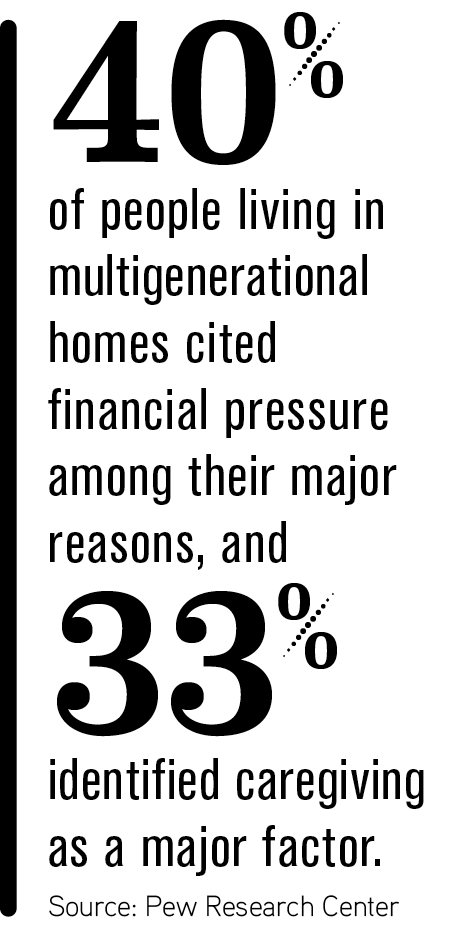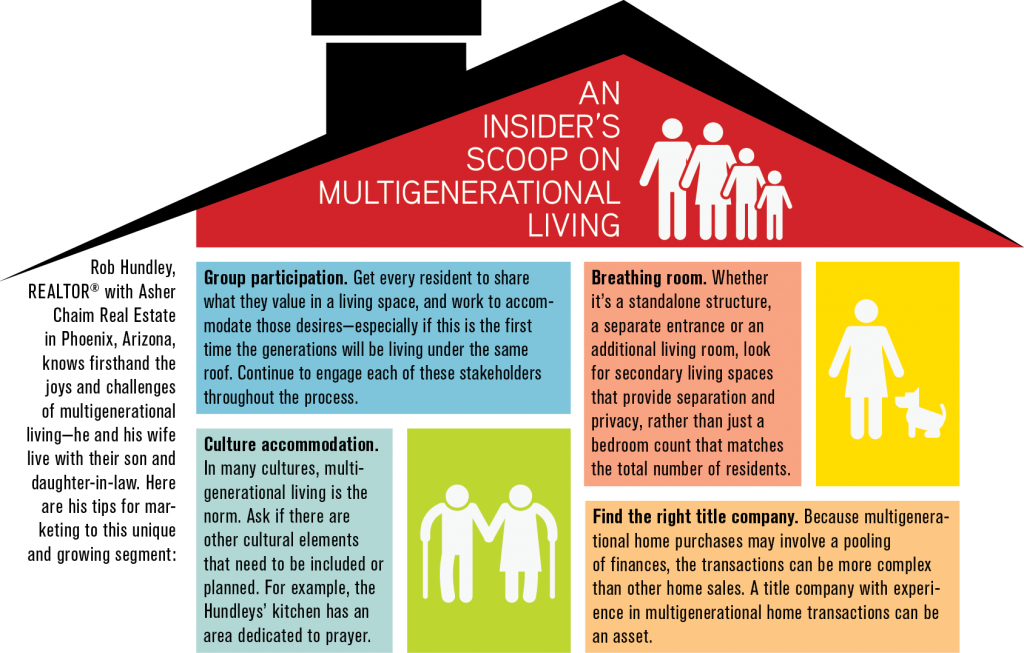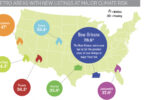Advice on how to market and sell to clients who plan on living in a multigenerational home
By Steve Hendershot
Multigenerational living arrangements are growing more popular, as more people choose to live alongside either adult children or their elderly parents. According to a new report from the Pew Research Center, the number of Americans living in multigenerational homes quadrupled over the last half-century to 18% of the population, and that trend accelerated during the pandemic, according to research from the National Association of REALTORS®.
 “It’s become a much larger part of the market, and it’s just continuing to expand,” says Steve Rath, CRS, a REALTOR® and owner/broker of Rath Real Estate in Roseville, California.
“It’s become a much larger part of the market, and it’s just continuing to expand,” says Steve Rath, CRS, a REALTOR® and owner/broker of Rath Real Estate in Roseville, California.
As people consider these arrangements, they’re looking for homes that can accommodate extra adult residents while also providing the space and privacy needed to alleviate relational stress. Those priorities can mean that multigenerational buyers value features such as separate entrances, quarters with mini-kitchens that are set off from other bedrooms, separate living rooms or even separate structures. Rath says he’s seeing a surge in the number of small, second homes located on the same lot as the primary home.
“It’s a great selling point if you’ve got it, and adds a lot of value,” says Rath.
Learning from experience
Rob Hundley, a REALTOR® with Asher Chaim Real Estate in Phoenix, Arizona, experienced that value firsthand two years ago when he and his wife moved from Denver to Phoenix to move in with their son and daughter-in-law—a concept that was new to Hundley but a cultural norm for his daughter-in-law. Moving into a small, secondary home on the structure, commonly called a “casita” in Phoenix real-estate parlance, enabled the elder Hundleys to enjoy being close to their children “without feeling the pressures of rubbing or chafing that can come with living more closely together,” says Hundley.
Now, Hundley is taking what he’s learned and beginning to evaluate properties through the lens of a multigenerational buyer. He says it’s crucial to meet with all of the stakeholders within those families—not just the primary purchaser—to ensure that everyone will be satisfied with the outcome.
“As an agent, you’re not a family counselor, but still there’s something to listening to each of the sub-units, and to what each person is saying and not saying, to determine the living-space needs beyond just the bedroom and bath. People don’t always think through those questions fully, or they think it won’t be that big of a deal—but it is, and it’s something to keep in mind,” says Hundley. “You’ve got to work through the process, almost like an architect on a custom build: ‘Tell me all of your wants, and then let’s come back together and figure out how many of them we can accomplish.’”
Multigenerational buyers driven by finances and health
The Hundleys moved in with their kids because living together was a cultural value, but there are other forces at work for many other people living in multigenerational arrangements. According to the aforementioned Pew study, 40% of people living in multigenerational homes cited financial pressure among their major reasons, and 33% identified caregiving as a major factor.
Financial dynamics can play a key role in cases where families pool their resources to acquire more attractive properties, especially in areas with sky-high prices. Those buyers may become more numerous as interest rates climb.
“When you combine your buying power, it makes a big difference and can really enable you to find nicer properties that way—as long as you get along with your parents,” says Rath.
Debbie Murray, CRS, a REALTOR® with Dallas, Texas-based Allie Beth Allman & Associates, first experienced multigenerational living when she sold two homes, then helped the sellers move into a single home with a multigenerational, senior-friendly floor plan.
When she picked up a listing for a five-bedroom, $2.6 million home that had been listed and unsuccessfully marketed twice before, she scoured the floor plan and determined that a large game room could instead be marketed as the centerpiece of a secondary living suite. The house sold in just a few days.
“Pay attention to the floor plan, because if it can be used in a multigenerational way, you can attract a different set of buyers,” Murray advises.
Multigenerational buyers bring a different set of needs and priorities to search for a new home. By recognizing and catering to those needs, agents will not only drive better outcomes for their clients, but also tap into a growing segment of the market.

Gain insight into the different attitudes, behaviors and needs of different generations of homebuyers and sellers with the recording “Tribal Marketing” at CRS.com/webinars.
Photo: iStock.com/Morsa Images








